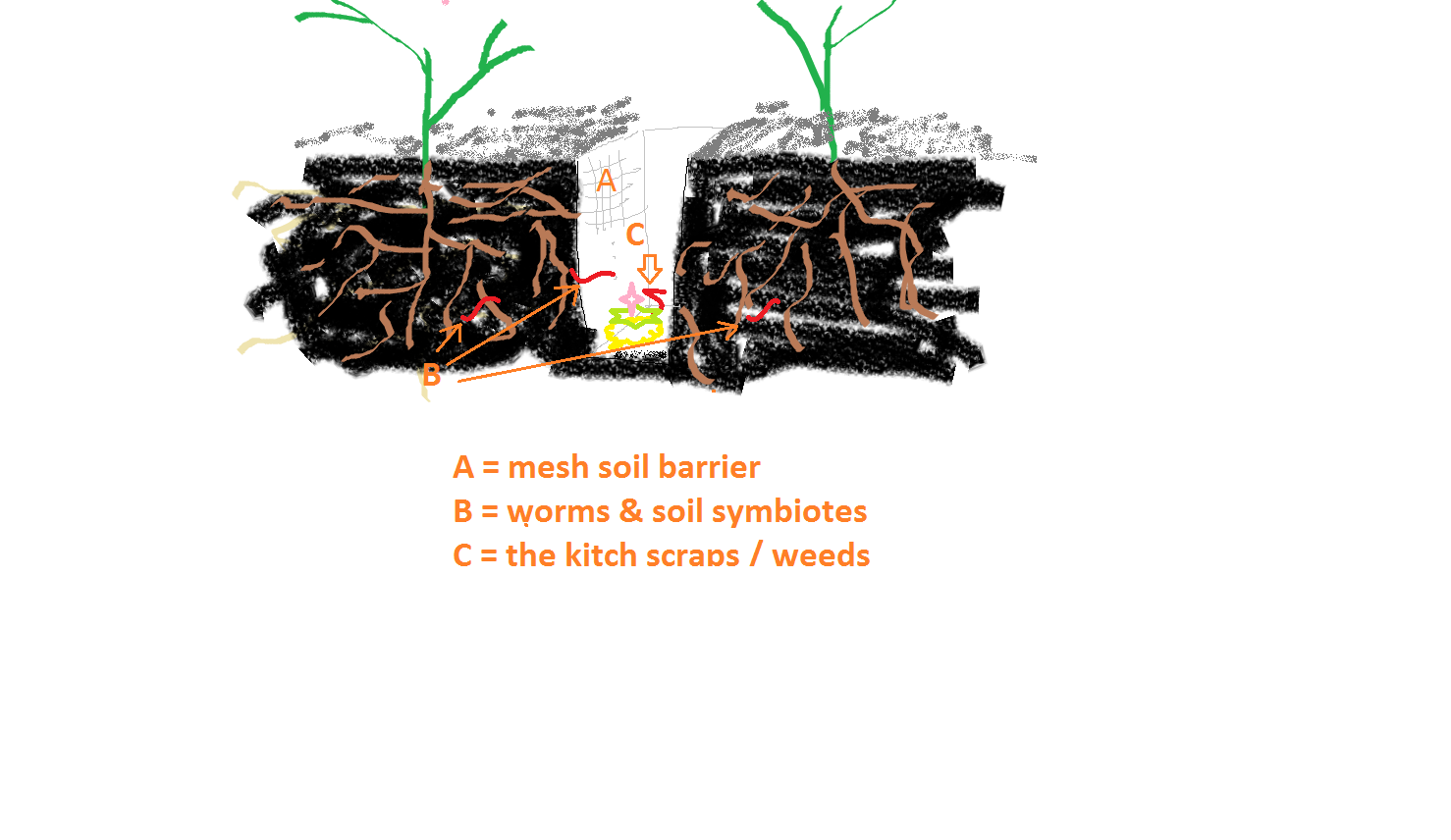So, some design questions are:
What would make a good mesh? Chicken wire with 1/4" squares? Large chicken
wire + large-mesh burlap?
I would say that mesh would adequately hold the soil from caving in; small mesh would be best (worms can move in and out of pretty small places!). You could use a nursery pot to form a "mesh pot" and place the mesh pot in the hole - this might keep voles from munching on your redworms. This mesh pot idea is the same as what I use to keep gophers from eating my tree/shrub roots.
Will the worms be able to eat from this resevoir and readily go back into
the soil?
Oh yes, definitely, but will they leave the food to romp around in your soil? Probably not. The truth is, the plant roots will probably seek the most nutrients of your vermi-hole, and you will likely end up with a hole full of castings, worms, and roots! [see below, my reference to Bentley's trenches - he discovered that a trench running the length of his beds worked great, the plants roots just reached in as far as they needed for the nutrients and moisture they wanted!]
Do I need to cover the hole or place soil on top of the fresh food?
Covering foodscraps is a very good idea, unless you want every neighborhood critter digging stuff up to eat! If you cover with straw (gardening straw; no seeds), it will not attract many rodents (if any) and then you can simply pull back the straw to add more kitchen waste, which to me sounds like a lot less work than trying to uncover the hole from a soil cover. Also, adding straw acts as bedding (carbon) to keep the high nitrogen wet foods from becoming too wet (anaerobic) for the worms. Think lasagna - food, straw, food, straw, etc. the worms will mix the lower layers up for you, just keep straw on top at all times!
Rectangular prism or circular prism hole?
Either, or try a trench like described by Bentley in the link below.
What else to consider?
Bentley over at RedWormComposting.com uses in situ vermicomposting trenches (as well as many other methods) and is a wonderful resource for all things vermicompost. The above link goes to a summary of his vermicomposting trenches.

